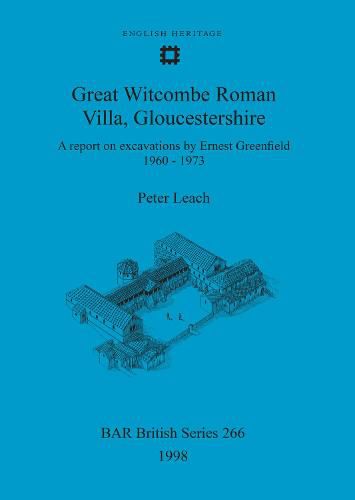Readings Newsletter
Become a Readings Member to make your shopping experience even easier.
Sign in or sign up for free!
You’re not far away from qualifying for FREE standard shipping within Australia
You’ve qualified for FREE standard shipping within Australia
The cart is loading…






This title is printed to order. This book may have been self-published. If so, we cannot guarantee the quality of the content. In the main most books will have gone through the editing process however some may not. We therefore suggest that you be aware of this before ordering this book. If in doubt check either the author or publisher’s details as we are unable to accept any returns unless they are faulty. Please contact us if you have any questions.
The Roman villa at Great Witcombe, Gloucestershire was discovered in 1818, and has subsequently been excavated several times, most recently by Ernest Greenfield (1960-73) whose work forms the basis of this book. By the later 3rd and 4th centuries, the villa had developed into a sumptuous country house of a courtyard plan, which included several mosaic pavements, two suites of baths and a prominent colonnaded central gallery and portico. It is suggested here that the villa belonged to the descendants of a veteran, settled on an estate established here at the foundation of the colonia at Gloucester.
$9.00 standard shipping within Australia
FREE standard shipping within Australia for orders over $100.00
Express & International shipping calculated at checkout
This title is printed to order. This book may have been self-published. If so, we cannot guarantee the quality of the content. In the main most books will have gone through the editing process however some may not. We therefore suggest that you be aware of this before ordering this book. If in doubt check either the author or publisher’s details as we are unable to accept any returns unless they are faulty. Please contact us if you have any questions.
The Roman villa at Great Witcombe, Gloucestershire was discovered in 1818, and has subsequently been excavated several times, most recently by Ernest Greenfield (1960-73) whose work forms the basis of this book. By the later 3rd and 4th centuries, the villa had developed into a sumptuous country house of a courtyard plan, which included several mosaic pavements, two suites of baths and a prominent colonnaded central gallery and portico. It is suggested here that the villa belonged to the descendants of a veteran, settled on an estate established here at the foundation of the colonia at Gloucester.